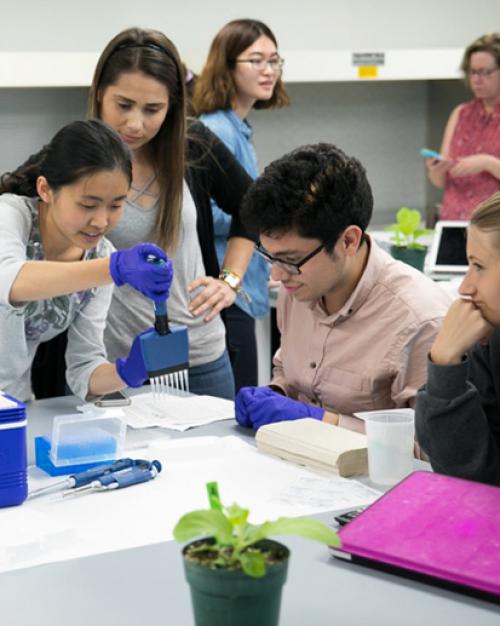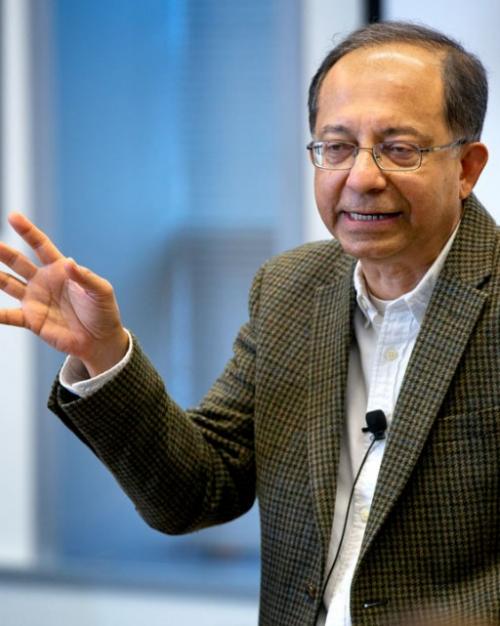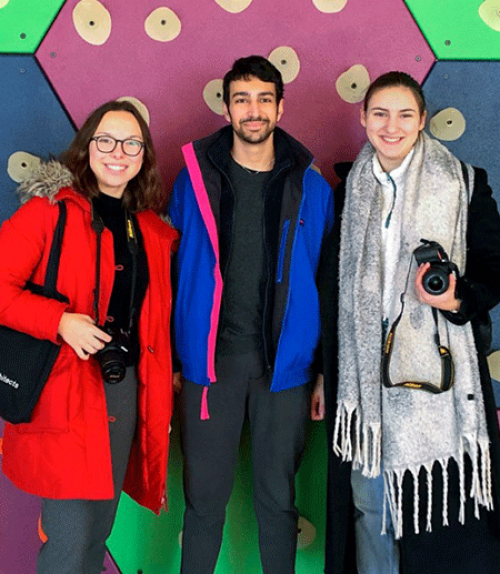The COVID-19 pandemic is keeping people apart, but Cornell students showed that despite physical distancing they can still make meaningful local, regional and global connections.
The university’s Office of Engagement Initiatives (OEI) celebrated the students’ work from this academic year at the Community Engagement Showcase 2020. Rather than the annual in-person celebration with posters and face-to-face interaction, this year's showcase was moved to an online exhibition.
“The mutual benefit of community-engaged learning is more important now than ever before,” said Mike Bishop, director of student leadership in OEI.
“Students strengthen collaborative, community relationships, and contribute to finding answers to problems throughout the world.”
The online exhibition highlights students’ work from 28 engaged courses and programs, in five categories:
• art, fashion and cross-cultural stories;
• environmental sustainability and conservation;
• K-12 youth development;
• migrations; and
• public and global health.
The projects included work by animal science major Stephanie Xue ’20, who explored the links between human, animal and environmental health through her project, One Health Approach to Conserving Chimpanzees.
She helped perform health checks on chimpanzees and learned about zoonotic respiratory diseases research at the Kibale National Park and Ngamba Island Chimpanzee Sanctuary in Uganda. Xue engaged with young students in Uganda’s Hoima District – near Lake Albert – to communicate the importance of wildlife conservation. She was partially funded by OEI and the Jane Goodall Institute.
In another project, students partnered with the William George Agency for Children’s Services in Freeville, New York – a nonprofit residential treatment center for adolescents – to develop culinary mastery for its residents.
Allison Latham, MBA ’20, and Alex Fey, MBA ’20, created a pilot program that served up hospitality skills, leavened the nuances of baking, explained how to handle food safely, demonstrated food’s sensory aspects and gave students an opportunity to prepare meals with chefs.
“It was a chance for the students to learn how to improve their own skills, but also to show off their knowledge,” Latham said.
Each week, the students recounted stories of how they cooked in their cottages, Latham said.
“You could see the hope and happiness from their expressions,” she said. “The students took pride in their dishes. Their eyes would light up when asked to describe the cooking method or meal in detail.”
Rayna Klugherz ’23, an art history major, has a vision to integrate the humanity of Native American Haudenosaunee (Iroquois Nation) art into the digital world with a virtual art museum.
“The Haudenosaunee people are active today with amazing, unique modern art that should be more widely recognized,” said Klugherz, who is developing the site with help from Tavo Duarte ’23, Jenn Reed ’23, Bliss Zheng ’23 and Chloe Kanders ’23.
Anna Canny ’21, Zhenlin Chen ’21 and doctoral candidate Alfredo Rodriguez are helping to reduce New York state’s carbon footprint by installing real-time electricity metering hardware to several Cornell Cooperative Extension’s county offices.
The meters have been installed in about 20 extension offices thus far; the goal for this phase of the project is 30. They hope to track energy consumption on a website and find ways to reduce electricity use.
Earlier this semester, Cornell’s American Institute of Architecture Students chapter met with the founder of LifeLab Kids in Detroit, which helps children with developmental disabilities and has converted a former church into art rooms, therapy centers and a gym.
In helping to create a master plan and expansion for LifeLab’s Ferndale, Michigan, campus, the students developed a sensory playground, a safe area for parents to drop off their children and an interior redesign to optimize space.
OEI and the Student Assembly provided funds for the student group’s leadership to visit the site. “Visiting was invaluable experience,” said Natalia Gulick ’21, who co-leads the team with Isaac de Castro ’21 and Nina Koscica ’21.
“It’s one thing to look at a site on paper and drawings,” said Gulick, “but it is a completely different experience to go in person. We were able to tune our designs to better fit the site and meet the people … to establish a rapport.”
Joy Das, program director, and Chenab Khakh, coordinator for OEI, assembled the online exhibit. Das said she enjoyed seeing students grow from their collaborative experiences.
“Students assume they will get professional experience in their field,” she said. “In their final reflections, however, the students are surprised to find a change in their own perspective of their communities, the world, and their own role and purpose.”
Read the story in the Cornell Chronicle.




